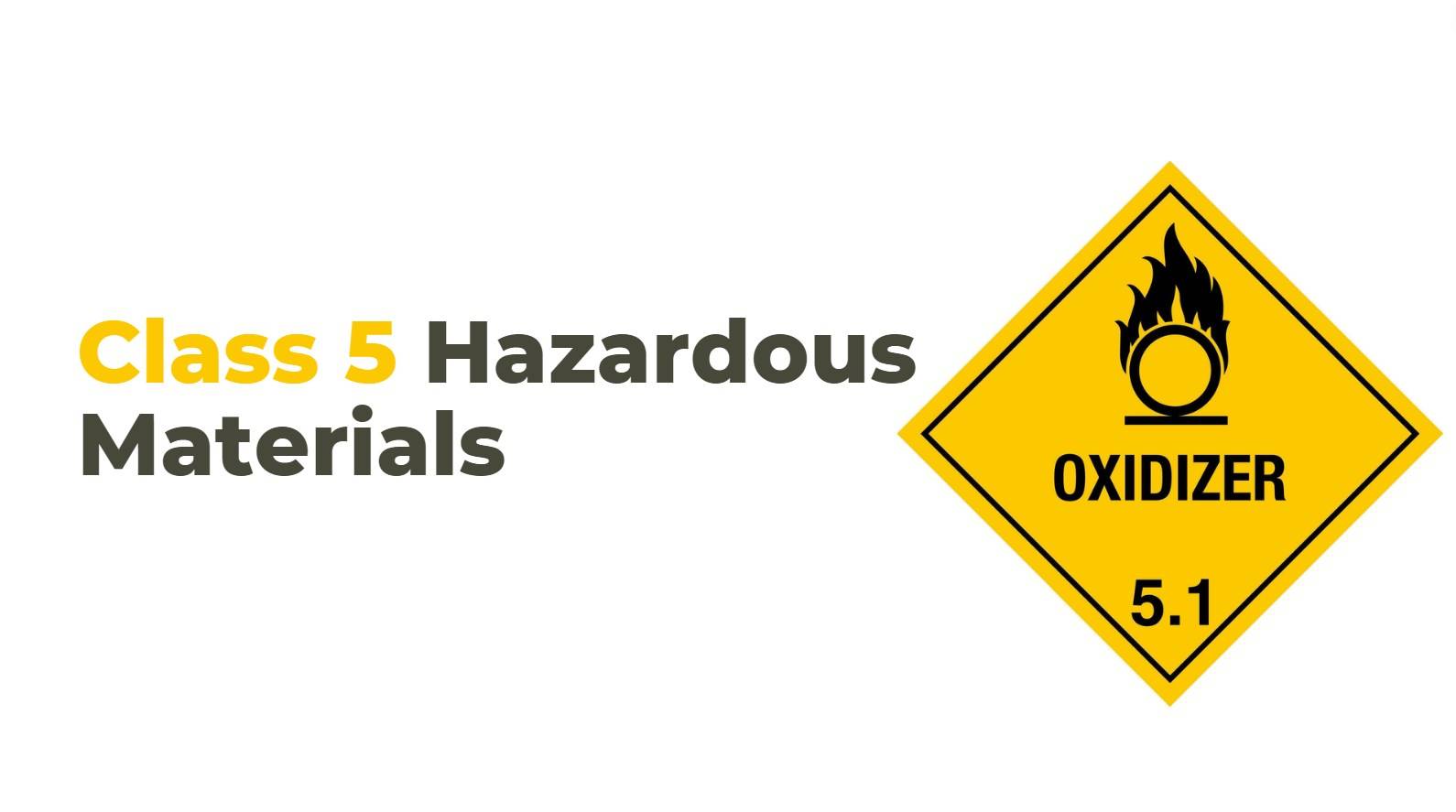Understanding Class 5 hazardous materials is essential for ensuring safety and compliance in various industries. These materials, which include oxidizers and organic peroxides, require careful handling due to their potential risks. This guide explores the classification, regulations, and best practices for managing Class 5 hazardous substances effectively.
What are the different classes of hazardous materials?
Hazardous materials are categorized into nine classes based on their properties and associated risks. The classes include:
- Class 1: Explosives
- Class 2: Gases (flammable, non-flammable, toxic)
- Class 3: Flammable liquids
- Class 4: Flammable solids, spontaneously combustible materials
- Class 5: Oxidizers and organic peroxides
- Class 6: Toxic and infectious substances
- Class 7: Radioactive materials
- Class 8: Corrosive substances
- Class 9: Miscellaneous dangerous substances
Hazardous Materials Classes Chart
| Class | Description |
|---|---|
| Class 1 | Explosives |
| Class 2 | Gases (flammable, non-flammable, toxic) |
| Class 3 | Flammable liquids |
| Class 4 | Flammable solids, spontaneously combustible |
| Class 5 | Oxidizers and organic peroxides |
| Class 6 | Toxic and infectious substances |
| Class 7 | Radioactive materials |
| Class 8 | Corrosive substances |
| Class 9 | Miscellaneous dangerous substances |
What is Class 5 and what does it include?
Class 5 hazardous materials consist of oxidizers and organic peroxides:
- Oxidizers: Substances that can cause or enhance combustion by providing oxygen or other oxidizing agents.
- Organic Peroxides: Compounds that contain a peroxide functional group, which can be thermally unstable and may decompose explosively under certain conditions.
These substances require specific handling procedures to mitigate risks associated with their reactivity.Class 5 Overview Chart
| Subclass | Description |
|---|---|
| Oxidizers | Enhance combustion; may react violently |
| Organic Peroxides | Thermally unstable; can decompose explosively |
Why is proper handling of Class 5 materials important?
Proper handling of Class 5 materials is crucial due to their inherent risks:
- Fire Hazards: Oxidizers can significantly increase fire risk if not managed correctly.
- Health Risks: Exposure to organic peroxides can cause skin irritation or respiratory issues.
- Environmental Impact: Improper disposal or leaks can lead to environmental contamination.
By adhering to safety protocols, organizations can minimize these risks effectively.Importance of Proper Handling Chart
| Risk | Importance of Proper Handling |
|---|---|
| Fire Hazards | Prevents accidents and injuries |
| Health Risks | Protects workers from exposure |
| Environmental Impact | Reduces contamination and regulatory penalties |
What are the risks associated with Class 5 hazardous materials?
The primary risks associated with Class 5 hazardous materials include:
- Reactivity: These substances can react violently with incompatible materials, leading to explosions or fires.
- Toxicity: Some oxidizers and organic peroxides may pose health hazards upon exposure.
- Storage Challenges: Special storage conditions are often required to prevent degradation or accidental reactions.
Organizations must conduct thorough risk assessments to manage these hazards effectively.Risks Overview Chart
| Risk | Description |
|---|---|
| Reactivity | Potential for violent reactions |
| Toxicity | Health hazards from exposure |
| Storage Challenges | Requires specific conditions for safe storage |
How should Class 5 materials be stored and transported?
To ensure safe storage and transportation of Class 5 materials:
- Storage Conditions: Keep in cool, dry areas away from direct sunlight and incompatible substances.
- Labeling Requirements: Clearly label all containers with appropriate hazard symbols.
- Transport Regulations: Follow local and international regulations regarding packaging, labeling, and documentation during transport.
Adhering to these guidelines helps prevent accidents and ensures compliance with regulatory standards.Storage and Transport Guidelines Chart
| Guideline | Description |
|---|---|
| Storage Conditions | Cool, dry areas; away from incompatible substances |
| Labeling Requirements | Use appropriate hazard symbols |
| Transport Regulations | Comply with local/international standards |
Buy Wholesale Battery Tips
For businesses seeking reliable battery solutions, Redway Battery is an excellent choice for wholesale buyers or OEM clients overseas. With over 13 years of experience in lithium battery manufacturing, Redway Battery provides high-quality products that serve as a superior alternative to lead-acid batteries.To make OEM orders from a trustworthy manufacturer like Redway Battery:
- Identify Your Needs: Determine specifications and quantities required.
- Contact Redway Battery: Reach out through their official channels.
- Discuss Terms: Negotiate pricing and delivery timelines.
- Place Your Order: Finalize your order with a purchase agreement.
Industrial News
Recent trends indicate increasing regulatory scrutiny regarding the handling of hazardous materials, particularly in light of recent environmental incidents linked to improper disposal practices. Companies are urged to adopt stricter safety protocols while enhancing employee training to mitigate risks associated with hazardous material management.
Redway Expert Views
“Understanding the complexities surrounding hazardous material classifications is crucial for businesses,” states an expert at Redway Battery. “Proper training and adherence to regulations not only ensure safety but also foster a culture of responsibility within organizations.”
FAQ Section
- Q1: What defines a material as hazardous?
A1: A material is classified as hazardous if it poses a risk to health, safety, or the environment due to its chemical properties. - Q2: Are there specific training requirements for handling hazardous materials?
A2: Yes, employees must undergo training on safe handling practices, emergency response procedures, and regulatory compliance. - Q3: How can businesses ensure compliance with hazardous material regulations?
A3: Regular audits, employee training programs, and adherence to local regulations help maintain compliance. - Q4: What should I do if I encounter a spill involving hazardous materials?
A4: Follow your organization’s emergency response plan immediately; evacuate the area if necessary and notify appropriate authorities.



